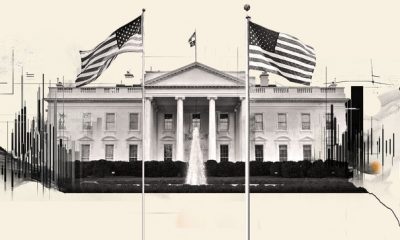

others
Japanese Yen remains depressed amid modest USD strength; downside seems limited – Crypto News
- The Japanese Yen retreats after touching a one-week high against its American counterpart.
- Rising bets for an imminent BoJ rate rise this year should limit any deeper losses for the JPY.
- The narrowing US-Japan yield differential might also lend support to the lower-yielding JPY.
The Japanese Yen (JPY) sticks to its negative bias through the Asian session on Tuesday. This, along with the emergence of some US Dollar (USD) buying, lifts the USD/JPY pair beyond the 152.00 mark in the last hour. Investors continue to cheer a delay in the implementation of US President Donald Trump’s reciprocal tariffs. Adding to this, talks aimed at ending the Russia-Ukraine war turn out to be a key factor undermining the JPY.
Furthermore, a goodish pickup in the US Treasury bond yields, which helps revive the USD demand, also contributes to driving flows away from the lower-yielding JPY. That said, the growing acceptance that the Bank of Japan (BoJ) will hike interest rates further should limit any meaningful JPY depreciation. Moreover, bets for additional interest rate cuts by the Federal Reserve (Fed) should cap the USD and the USD/JPY pair.
Japanese Yen bears retain intraday control amid receding safe-haven demand, rebounding US bond yields
- US President Donald Trump said on Thursday that he plans to unveil reciprocal tariffs, which would aim at every country that charges duties on US imports, though he stopped short of giving any details.
- Furthermore, the optimism over talks between the US and Russia aimed at ending the war in Ukraine boosted investors’ confidence and undermined demand for the safe-haven Japanese Yen on Tuesday.
- Against the backdrop of strong inflation figures from Japan, the solid Q4 Gross Domestic Product (GDP) released on Monday cemented the case for imminent rate hikes from the Bank of Japan this year.
- Markets are now pricing in roughly another 37 basis points worth of increases by December, pushing the yield on the benchmark 10-year Japanese government bond to its highest level since April 2010.
- Meanwhile, a surprise drop in US Retail Sales, along with mixed signals on inflation, suggests that the Federal Reserve could possibly cut interest rates at the September or October policy meeting.
- Philadelphia Fed President Patrick Harker said on Monday that the labor market is largely in balance and the current economy argues for a steady policy as inflation has been sticky over recent months.
- Fed Board of Governors member Michelle Bowman noted that high asset prices may have impeded progress on inflation and more certainty is needed on declining inflation before reducing rates.
- Fed Board of Governors member Christopher Waller said that inflation progress last year has been excruciatingly slow and that rate cuts would be appropriate in 2025 if inflation repeats the 2024 pattern.
- Nevertheless, Fed Funds Futures see a 40 basis point Fed rate cut in 2025, causing the recent decline in the US Treasury bond yields and contributing to the narrowing of the US-Japan rate differential.
- Traders look to the release of the Empire State Manufacturing Index from the US, which, along with speeches by influential FOMC members, would drive the US Dollar and the USD/JPY pair.
USD/JPY could climb further towards testing 200-day SMA barrier near the 152.65-152.70 region
From a technical perspective, last week’s failure near the 50% retracement level of the January-February down leg and the subsequent slide below the very important 200-day Simple Moving Average (SMA) favors bearish traders. Moreover, oscillators on the daily chart are holding in negative territory and suggest that the path of least resistance for the USD/JPY pair is to the downside. Hence, any further move up towards the 152.00 mark could be seen as a selling opportunity, which should cap spot prices near the 152.65 region (200-day SMA). This is followed by the 100-day SMA, currently pegged near the 153.15 region, which if cleared could trigger a short-covering rally beyond the 154.00 mark, towards the 154.45-154.50 supply zone en route to last week’s swing high, around the 154.75-154.80 region.
On the flip side, the 151.25 area, or the Asian session low, now seems to act as immediate support ahead of the 151.00-150.90 zone, or the year-to-date trough touched earlier this month. A convincing break below the latter would expose the 150.00 psychological mark. Some follow-through selling should pave the way for a fall toward the 149.60-149.55 region en route to the 149.00 round figure and the December 2024 swing low, around the 148.65 region.
US Dollar PRICE Today
The table below shows the percentage change of US Dollar (USD) against listed major currencies today. US Dollar was the strongest against the New Zealand Dollar.
| USD | EUR | GBP | JPY | CAD | AUD | NZD | CHF | |
|---|---|---|---|---|---|---|---|---|
| USD | 0.27% | 0.27% | 0.41% | 0.17% | 0.14% | 0.58% | 0.25% | |
| EUR | -0.27% | -0.01% | 0.14% | -0.10% | -0.13% | 0.31% | -0.02% | |
| GBP | -0.27% | 0.00% | 0.17% | -0.09% | -0.12% | 0.31% | -0.01% | |
| JPY | -0.41% | -0.14% | -0.17% | -0.26% | -0.30% | 0.12% | -0.19% | |
| CAD | -0.17% | 0.10% | 0.09% | 0.26% | -0.04% | 0.41% | 0.08% | |
| AUD | -0.14% | 0.13% | 0.12% | 0.30% | 0.04% | 0.44% | 0.10% | |
| NZD | -0.58% | -0.31% | -0.31% | -0.12% | -0.41% | -0.44% | -0.32% | |
| CHF | -0.25% | 0.02% | 0.01% | 0.19% | -0.08% | -0.10% | 0.32% |
The heat map shows percentage changes of major currencies against each other. The base currency is picked from the left column, while the quote currency is picked from the top row. For example, if you pick the US Dollar from the left column and move along the horizontal line to the Japanese Yen, the percentage change displayed in the box will represent USD (base)/JPY (quote).
Tariffs FAQs
Tariffs are customs duties levied on certain merchandise imports or a category of products. Tariffs are designed to help local producers and manufacturers be more competitive in the market by providing a price advantage over similar goods that can be imported. Tariffs are widely used as tools of protectionism, along with trade barriers and import quotas.
Although tariffs and taxes both generate government revenue to fund public goods and services, they have several distinctions. Tariffs are prepaid at the port of entry, while taxes are paid at the time of purchase. Taxes are imposed on individual taxpayers and businesses, while tariffs are paid by importers.
There are two schools of thought among economists regarding the usage of tariffs. While some argue that tariffs are necessary to protect domestic industries and address trade imbalances, others see them as a harmful tool that could potentially drive prices higher over the long term and lead to a damaging trade war by encouraging tit-for-tat tariffs.
During the run-up to the presidential election in November 2024, Donald Trump made it clear that he intends to use tariffs to support the US economy and American producers. In 2024, Mexico, China and Canada accounted for 42% of total US imports. In this period, Mexico stood out as the top exporter with $466.6 billion, according to the US Census Bureau. Hence, Trump wants to focus on these three nations when imposing tariffs. He also plans to use the revenue generated through tariffs to lower personal income taxes.
-
Cryptocurrency1 week ago
XRP News: Ripple Unveils ‘Ripple Prime’ After Closing $1.25B Hidden Road Deal – Crypto News
-

 Blockchain1 week ago
Blockchain1 week agoAfrica Countries Pass Crypto Laws to Attract Industry – Crypto News
-

 Cryptocurrency1 week ago
Cryptocurrency1 week agoDOGE to $0.33 in Sight? Dogecoin Must Defend This Key Level First – Crypto News
-
others1 week ago
JPY soft and underperforming G10 in quiet trade – Scotiabank – Crypto News
-

 Blockchain7 days ago
Blockchain7 days agoXRP Price Gains Traction — Buyers Pile In Ahead Of Key Technical Breakout – Crypto News
-

 Blockchain1 week ago
Blockchain1 week agoISM Data Hints Bitcoin Cycle Could Last Longer Than Usual – Crypto News
-

 De-fi1 week ago
De-fi1 week agoAster Rallies on ‘Rocket Launch’ Incentives Campaign – Crypto News
-

 Cryptocurrency1 week ago
Cryptocurrency1 week agoWhat next for Avantis price after the 73% recovery? – Crypto News
-

 Technology1 week ago
Technology1 week agoNothing OS 4.0 Beta introduces pre-installed apps to Phone (3a) series: Co-founder Akis Evangelidis explains the update – Crypto News
-

 Technology5 days ago
Technology5 days agoSam Altman says OpenAI is developing a ‘legitimate AI researcher’ by 2028 that can discover new science on its own – Crypto News
-

 Blockchain1 week ago
Blockchain1 week agoEthereum Rebounds From Bull Market Support: Can It Conquer The ‘Golden Pocket’ Next? – Crypto News
-

 Cryptocurrency1 week ago
Cryptocurrency1 week agoTrump plans to pick Michael Selig to lead CFTC: Report – Crypto News
-

 De-fi1 week ago
De-fi1 week agoNearly Half of US Retail Crypto Holders Haven’t Earned Yield: MoreMarkets – Crypto News
-

 Cryptocurrency1 week ago
Cryptocurrency1 week agoBitcoin’s institutional surge widens trillion-dollar gap with altcoins – Crypto News
-

 Technology1 week ago
Technology1 week agoUniswap Foundation (UNI) awards Brevis $9M grant to accelerate V4 adoption – Crypto News
-
others1 week ago
Indian Court Declares XRP as Property in WazirX Hack Case – Crypto News
-

 Technology1 week ago
Technology1 week agoFrom Studio smoke to golden hour: How to create stunning AI portraits with Google Gemini – 16 viral prompts – Crypto News
-
Business1 week ago
PEPE Coin Price Prediction as Weekly Outflows Hit $17M – Is Rebound Ahead? – Crypto News
-

 Cryptocurrency1 week ago
Cryptocurrency1 week agoHYPE Breaks Out After Robinhood Listing and S-1 Filing: What’s Next? – Crypto News
-

 Blockchain1 week ago
Blockchain1 week agoBinance Stablecoin Outflow On A Steady Rise — What This Means For The Market – Crypto News
-

 De-fi1 week ago
De-fi1 week agoHYPE Jumps 10% as Robinhood Announces Spot Listing – Crypto News
-
others1 week ago
Platinum price recovers from setback – Commerzbank – Crypto News
-

 Cryptocurrency7 days ago
Cryptocurrency7 days agoWestern Union eyes stablecoin rails in pursuit of a ‘super app’ vision – Crypto News
-
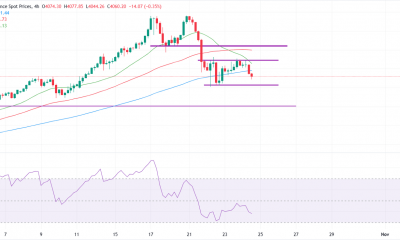
 others1 week ago
others1 week agoGold trims losses after softer US inflation reinforces dovish Fed outlook – Crypto News
-
Business1 week ago
White House Crypto Czar Backs Michael Selig as ‘Excellent Choice’ To Lead CFTC – Crypto News
-
others1 week ago
Bitcoin Price Eyes $120K Ahead of FED’s 98.3% Likelihood to Cut Rates – Crypto News
-

 Technology1 week ago
Technology1 week agoMint Explainer | India’s draft AI rules and how they could affect creators, social media platforms – Crypto News
-

 Blockchain1 week ago
Blockchain1 week agoXRP/BTC Retests 6-Year Breakout Trendline, Analyst Calls For Decoupling – Crypto News
-
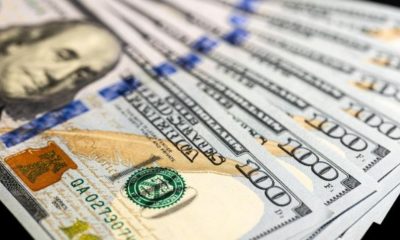
 Cryptocurrency1 week ago
Cryptocurrency1 week agoUSDJPY Forecast: The Dollar’s Winning Streak Why New Highs Could Be At Hand – Crypto News
-
others7 days ago
Is Changpeng “CZ” Zhao Returning To Binance? Probably Not – Crypto News
-

 Cryptocurrency1 week ago
Cryptocurrency1 week agoFetch.ai and Ocean Protocol move toward resolving $120M FET dispute – Crypto News
-
Technology1 week ago
Can Hype Price Hit $50 After Robinhood Listing? – Crypto News
-

 Technology1 week ago
Technology1 week agoOpenAI announces major Sora update: Editing, trending cameos, and Android launch on the way – Crypto News
-

 Metaverse1 week ago
Metaverse1 week agoGemini in Gmail automates meeting schedules effortlessly – Crypto News
-

 Blockchain1 week ago
Blockchain1 week agoEntire Startup Lifecycle to Move Onchain – Crypto News
-

 Cryptocurrency1 week ago
Cryptocurrency1 week agoNEAR’s inflation reduction vote fails pass threshold, but it may still be implemented – Crypto News
-

 Technology1 week ago
Technology1 week agoSurvival instinct? New study says some leading AI models won’t let themselves be shut down – Crypto News
-
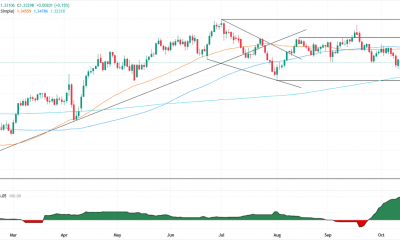
 others6 days ago
others6 days agoGBP/USD floats around 1.3320 as softer US CPI reinforces Fed cut bets – Crypto News
-

 Cryptocurrency5 days ago
Cryptocurrency5 days agoInside Bitwise’s milestone solana ETF launch – Crypto News
-

 Technology1 week ago
Technology1 week agoMicrosoft introduces Mico avatar, long-term memory, and health features to Copilot: All you need to know – Crypto News
-

 Blockchain1 week ago
Blockchain1 week agoBitcoin Whale From 2009 Moves Coins After 14 Years Asleep – Crypto News
-
others1 week ago
Silver consolidates below $49 amid Fed rate-cut bets – Crypto News
-
Business1 week ago
HBAR Price Targets 50% Jump as Hedera Unleashes Massive Staking Move – Crypto News
-
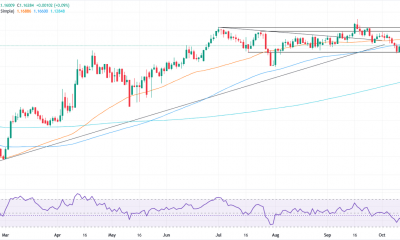
 others1 week ago
others1 week agoEUR/USD hovers at 1.1600 as muted CPI data fails to alter Fed stance – Crypto News
-
Business1 week ago
Trump Picks SEC Crypto Counsel Michael Selig to Lead CFTC Amid Crypto Oversight Push – Crypto News
-

 Blockchain1 week ago
Blockchain1 week agoPump.Fun Rallies 10% After Acquisition Of Trading Terminal Padre – Crypto News
-
Technology1 week ago
Analyst Eyes Key Support Retest Before a Rebound for Ethereum Price Amid $93M ETF Outflows and BlackRock Dump – Crypto News
-
Business1 week ago
Ripple Explores New XRP Use Cases as Brad Garlinghouse Reaffirms Token’s ‘Central’ Role – Crypto News
-
others1 week ago
Tether’s Stablecoin 1.0 Era Is Over – Now the Industry Needs 2.0 – Crypto News
-

 De-fi1 week ago
De-fi1 week agoAave Labs Acquires Stable Finance to Expand DeFi Access – Crypto News





